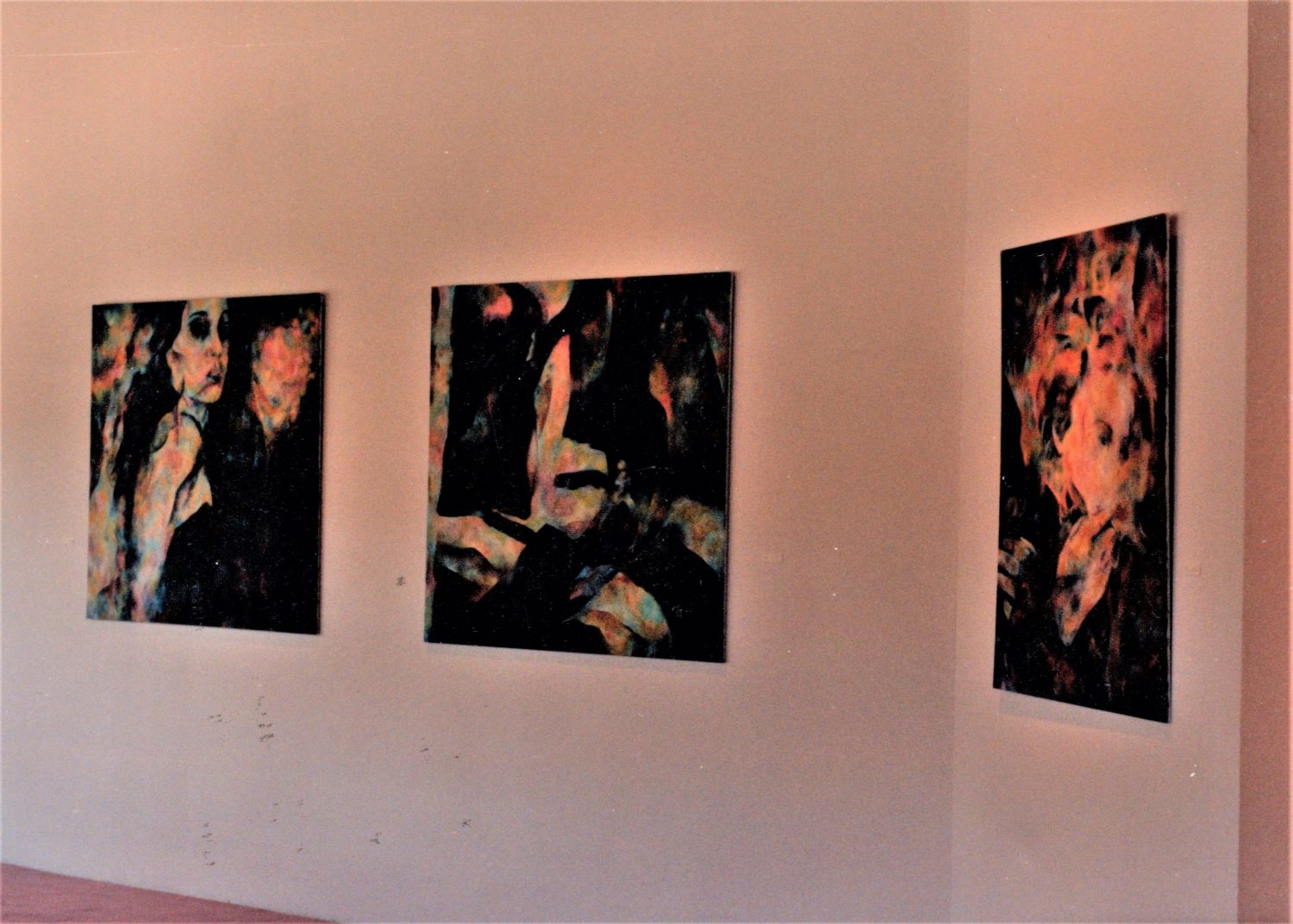My love of both visual art and music started very early in life. When I was in kindergarten, three of my favorite songs were “Somebody to Love,” “Paperback Writer,” and “Over the Rainbow.” At that time my parents, with kids in tow, would occasionally make a stop at one of the Tower Records locations in town; when I was a little older, I would venture alone or with my brother to other record stores as well. Starting when I was a pre-teen and continuing for decades, much of my autobiography takes place in the aisles and at the counters of such establishments. In those pre-MTV days,1 the album package itself was the primary visual accompaniment to the songs; one would hold the jacket while listening to a new record – reading the liner notes, looking at the pictures, soaking up all available information about the people who created the music. In the late ’80s, when CDs became the dominant format, the big loss for me wasn’t the so-called “warm” sound of vinyl, but the 12” square piece of artwork.2
One day in 1984, I made a trip to the Beat Records in Sacramento, and came across an album cover which caught my eye. The band’s name – with which I was unfamiliar – along with an abstract logo was emblazoned in green across the top of an arresting black and white photograph of a young man with a shock of dark wavy hair which contrasted with his pale skin; a stylish polka-dot shirt/tie combination; and a hollow body electric guitar, its neck resting on his shoulder. Enthralled, I pulled the record from the rack. The back cover featured another photo of the same young man and the lyrics to a song titled “Savage Earth Heart.” The whole package’s Pre-Raphaelite3 look and feel drew me in. Principal Waterboy Mike Scott actually had the angelic face of a Pre-Raphaelite model, and the printed lyrics touched on God and nature, both of which were Pre-Raphaelite obsessions.
Although I am not, nor have I ever been, in the habit of buying records by bands I haven’t heard – no matter how attractive the cover – it seemed as though I should hear The Waterboys,4 so I slapped down a few bucks for the used copy I held in my hand. When I got it home and on the turntable, I was immediately struck when the needle hit the groove. What I heard had echoes of artists whose work I already admired: Bob Dylan, Patti Smith, Van Morrison; the music was epic – a wall of sound with evocative lyrics and a passionate delivery, all drenched in reverb.5
The Waterboys was not only the record I wanted to hear at that time, but the one I needed to hear. I would have loved the music had it been given to me on a home-taped cassette, but the cover, reminiscent as it was of the late work of Pre-Raphaelite co-founder Dante Gabriel Rossetti, one of my favorite painters, made it all the more compelling. I would soon buy the whole first album, which was eventually released in the US, and their second, A Pagan Place. In late 1985, an advertisement in, I believe, Spin magazine for their third, This is the Sea, prompted an immediate run to the record shop. It, too, had a notable cover which recalled the Pre-Raphaelites, this time by celebrated photographer Lynn Goldsmith.
For their first three albums,6 The Waterboys shared with Rossetti an ambitious, romantic, hallucinatory quality which aligned with my musical as well as my visual aesthetic and that I would attempt to capture in my work. During those long mid-’80s hours in the studio while I was finding my feet as a painter, The Waterboys were in heavy rotation, urging me on.
1 I never had cable television or access to MTV; probably just as well.
2 I did also miss the break between side one and side two of an album.
3 The Pre-Raphaelite Brotherhood was a group of young, idealistic, nineteenth century British artists. As the Victorian-era avant-garde, they were met by severe opposition from contemporaneous critics, who on the whole found the work assaultive and vulgar.
4 Island Records (1984). Unfortunately, there is no photography credit on the jacket. However, it has been reported that the distinctive logo, which resembles chromosomes and symbolizes water, was designed by one Stephanie Nash, Island Records employee. [June 14, 2024 addendum: In the book included in The Waterboys’ 1985 box set, which documents the making of the album This is the Sea, it is revealed that the photographer was Sheila Rock.]
5 The five songs on the record turned out to be from the band’s first UK album; this “abridgement” was their American debut. At the time, record labels would sometimes test the waters, so to speak, with the “mini-LP” format before releasing a full album by a new band.
6 The fourth album, Fisherman’s Blues, was a simply recorded, largely acoustic affair – quite a departure from what came before, but engaging in a whole different manner.


























![Francis Bacon: Three Studies of the Human Head [Right panel] (1953).](https://i0.wp.com/coreyokada.com/wp-content/uploads/2021/03/francis_bacon-three_studies_of_the_human_head_1953_right_panel.jpg?w=176&h=176&crop=1&ssl=1)
![Francis Bacon: Three Studies of Muriel Belcher [Left panel] (1966).](https://i0.wp.com/coreyokada.com/wp-content/uploads/2021/03/francis_bacon_three_studies_of_muriel_belcher_1966_left_panel.jpg?w=176&h=176&crop=1&ssl=1)
![Francis Bacon: Tripych Inspired by the Oresteia of Aeschylus [Middle panel] (1981).](https://i0.wp.com/coreyokada.com/wp-content/uploads/2021/03/francis_bacon_triptych_inspired_by_the_oresteia_of_aeschylus_1981_middle_panel.jpg?w=176&h=176&crop=1&ssl=1)



